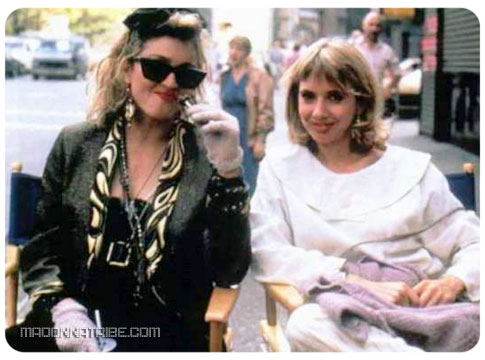Fashion Tips From The Movies
Fashion and cinema have benefited from mutual support for so long that it is pretty much taken for granted by now that there is an intrinsic connection between the two. Familiar tales, such as that Armani and Ralph Lauren owe much of the fame to their involvement with cinema (for, respectively, American Gigolo and Annie Hall), are trotted out with the regularity of cliches. And yes, I think we all know the story about how Clark Gable’s refusal to wear a vest in It Happened One Night nearly killed the men’s vest industry in the States, blah blah blah.
People love these kinds of facts – I say “people”, but I really mean PRs and fashion journalists, because for the former they provide a memorably catchy means of persuasion and for the latter it means easy copy. But whether they ring true any more is a different issue.
When Pulp Fiction was released, the red nail polish worn by Uma Thurman was as impossible to buy as Ugg boots were this winter. But the yellow trainers she wore in Kill Bill Vol. 1 didn’t make too much of a visible fashion impact, despite one fashion journalist claiming they were “literally racing out of stores”.
Madonna‘s wardrobe in Desperately Seeking Susan has much to answer for in regards to 80s fashion mistakes, but her one in Evita, I think we can all agree, did not. This has nothing to do with aesthetics (no one can defend Susan’s underwear-as-outerwear look), nor, really, her latterly waning appeal. The effect of the former was totally unexpected, whereas by the time Evita was released, the film’s PR machine was clanking away loudly, plugging Madonna’s chignon and stockings with a ubiquity that was stupefying.

Quite when fashion film tie-ins stopped working so effectively is hard to place. I like to think Wayne’s World has much to do with it, with its satirisation of how companies pay for placement in movies. Most of us have become too media-aware for this to work any more. As the number of Popbitch-like websites and magazines proliferate, it seems that most of us prefer to make fun of our celebrities these days than to idolise them, let alone dress like them. Even celebrity magazines seem aware of this: Heat, for example, has a weekly feature on how to get a celebrity look, but there is a hint of someone’s tongue in cheek in its demonstration of how you, too, can look like a scruffy Geri Halliwell after a visit to your local H&M.
Moreover, as even designers say these days, few of us want to dress in one particular look or label any more, Dynasty-style. Instead, it is now the style to look more original. This is why slouchy, sloppy Kate Moss has topped the “Best Dressed” polls in both Glamour and Vanity Fair magazines this month and Ivana Trump, say, has not.
Nobody wants to look like a celebrity style-sheep these days: even Scarlett Johansson was criticised the other week for wearing the same gold Roberto Cavalli dress that Britney Spears had trotted out in before, and Johansson has her own celebrity status on her side.
In fact, aside from overkeen fashion PRs, the only people who seem to be ignorant of this are designers. But they, to be frank, have been known to scrabble under a rock in search of inspiration (and no, that is not an exaggeration: I once met a designer who claimed that his collection was inspired by “the pattern of rain rivulets in the forest”).
This season, Louis Vuitton is describing its collection as a homage to Elizabeth Taylor in Cleopatra (although the label’s designer Marc Jacobs is more chary than his PRs about this specific referencing, having spread his inspiration net a little wider in an interview with the Guardian and describing it as being more about “any great woman in history”).
Julien Macdonald, with what can only be described as increasing desperation, has harked back to Audrey Hepburn during his not entirely successful time at Givenchy (he is expected to step down later this month). This head-to-toe homage look might work on the runway, but in reality it makes you look like you are on your way to a costume party, or that you can’t decide how to dress without recourse to your local Blockbuster.
Ultimately, the idea that we are still so in awe of Hollywood actors that we all imitate their dress codes in order to be a whisper closer to their aura of coolness and that we are wholly unaware that this is all just insidious advertising, feels a wee bit insulting.
So see the film [Starsky and Hutch], by all means, but don’t, please, buy the trainers. I don’t half fancy one of Starsky’s cardies, though.
Extract from The Guardian
